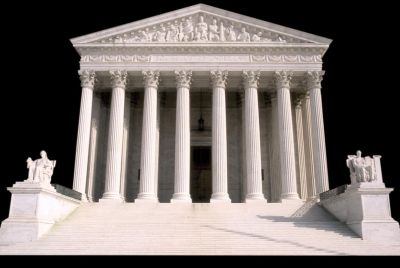Tesla Child Labour Scandal: Is Elon Musk's Solution A 'Joke'?
Congo produces 70% of the world's Cobalt

In 2023, Elon Musk vowed to prove that Tesla's cobalt suppliers weren't using child or forced labour at mines in the Democratic Republic of Congo. After the board and investors from Tesla rejected a proposal to hire an outside monitor, Musk, the wealthiest person in the world, said he would put a live webcam on the cobalt plant instead.
"I heard a question raised about cobalt mining and you know what?" Musk asked an enthusiastic and boisterous group of shareholders. "We will do a third-party audit. In fact, we'll put a webcam on the mine. If anybody sees any children, please let us know," he joked.
Musk has a track record of making bold promises that he hasn't fulfilled, from the safety of Tesla plants and automated driving features to plans to establish an "ecological paradise" at the company's Austin plant. A year after his most recent pledge, Forbes has discovered that Musk's webcam hasn't shown up as planned.
Elon Musk's Solution Is A Joke?
Instead of the live video feed Musk promised, the company that supplies most of Tesla's cobalt, Kamoto Copper Co, publishes a single image of the expansive mine complex in southern Congo each month, captured by an Airbus satellite floating high above the planet.
But despite the regular footage, the resolution isn't quite good enough to show anything smaller than processing facilities and the degraded terrain of a highly industrialised open-pit mine - which could explain why no children are visible.
In its most recent environmental impact report, Tesla also stated that it had several independent evaluations of the working conditions at Kamoto, controlled by the major global mining company Glencore.
"Our direct suppliers undergo third-party audits to ensure no child labour happens at these mines and no material from unauthorised sources enters our supply chain," the company stated. "Four audits were conducted in 2023 and found no instances of child labour at our direct suppliers' sites."
However, according to Courtney Wicks, the executive director of Investor Advocates for Social Justice, neither the monthly satellite image nor the independent assessments solve persistent cobalt and copper mining issues. Speaking on behalf of the Tesla shareholder group that attempted to convince the business to implement stricter policies for the purchase of cobalt in 2023 last year, Wicks said that the actions that Tesla has done "are not worth even mentioning."
"The effectiveness is just not sufficient at this stage," she added. "Taking one picture a month — it's not really a comprehensive plan."
Wicks added that the third-party audits Tesla claimed to be doing at the Kamoto mine complex do not relieve worries over the exploitation of forced and underage labour. This is due to the fact that these inspections seem planned rather than spontaneous and don't seem to take place at night - when issues are more likely to be discovered.
"The lack of standards and lack of transparency around how they're executed, that was our main concern," she said. "It sounds good in a sustainability report but for investors that care about this issue and see this as a significant risk, what's the effectiveness of these audits?"
Child Labour And Unlicensed Mines
According to Michael Posner, the director of NYU's Centre for Business and Human Rights and a professor at the Stern School of Business, the problem lies not so much at the Kamoto mining complex but in nearby unlicensed mines.
According to a recent case study conducted by Posner with the Geneva Centre for Business and Human Rights, roughly 40,000 minors are employed by, or present in, artisanal small-scale mining (ASM) activities in the Democratic Republic of the Congo. Minors frequently reside there "because their families do not have access to childcare. Older children also work in ASM because families need additional income," the study said.
"Monitoring what goes on in a mechanised mine site ignores the central problem, which is that a significant percentage of cobalt is coming from artisanal mines," Posner stated, adding that these smaller-scale mines sell its cobalt to dealers who then blend it with metal from larger mines such as Kamoto.
However, Posner also claimed that "that's the problem" because Tesla isn't keeping an eye on them. The director continued that China also receives Congolese cobalt shipments for refining, which makes it even more difficult to verify that the source of the metal is not an artisanal mine.
"By the time it's put inside of a battery in the United States or Europe, it's all been commingled somewhere in China," Posner added.
Musk and Tesla did not respond to requests for comment.
Why Is Cobalt Controversial?
The majority of the world's cobalt, 70 per cent, comes from Congo. While its current price per metric tonne is roughly $28,000, less than half of what it was two years ago, cobalt is still highly profitable to mine.
Cobalt is a vital component of Tesla's electric cars' batteries. The substance, which is present in lithium-ion battery cathodes along with copper, stabilises the ions and increases energy density. Its batteries are used in everything from electric cars to computers to iPhones. Although Musk's business isn't the most significant single user of cobalt, activists for human rights and child labour have focused on it because of its dominant position in the EV market.
"Customers are increasingly seeking assurance that their own supply chains do not have any links to human rights abuses," said Charles Watenphul, a spokesman for Glencore. "Our copper and cobalt operations in the DRC participate in third-party responsible sourcing audits under the Responsible Minerals Assurance Procedure on an annual basis."
According to Watenphul, Kamoto and Mutanda Mining in the Democratic Republic of the Congo, which Glencore also owns, have both pledged to take part in the Copper Mark programme, which encourages ethical mining methods in the copper sector.
© Copyright IBTimes 2025. All rights reserved.






















